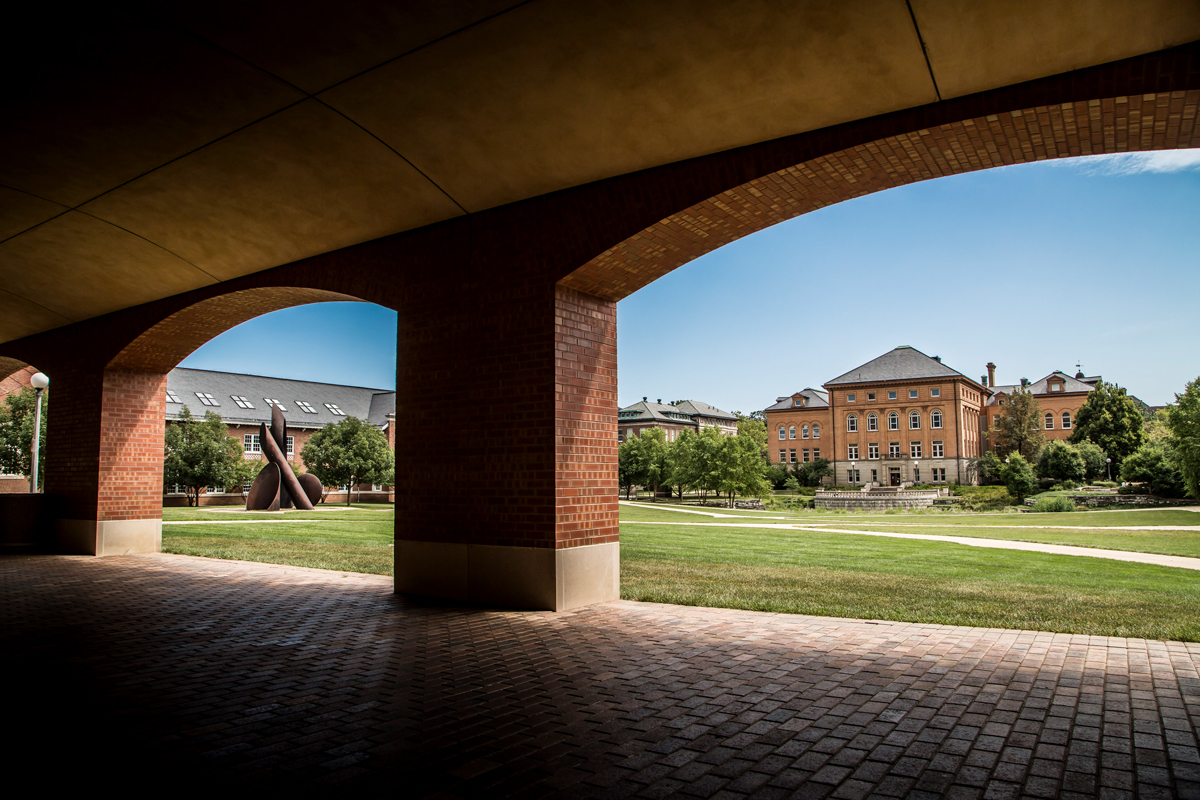Civil and Environmental Engineering
Civil and environmental engineers apply basic principles of science, supported by mathematical and computational tools, to address the biggest challenges facing society: ensuring clean air, safe drinking water and sanitation; addressing our changing environment; protecting the population from natural and man-made hazards; designing a sustainable infrastructure that serves everyone; reimagining human and commodity traffic for an automated future; and of course designing and constructing the world’s tallest buildings and most iconic bridges.
There are ten areas of study.
The Construction Engineering and Management area of study prepares students to manage design, construction and operation of sustainable buildings and infrastructure systems in the increasingly global construction industry.
The Construction Materials area of study gives students a comprehensive understanding of the composition, microstructure, and engineering behavior of materials used in civil engineering applications.
The program in Energy-Water-Environment Sustainability (EWES) is a new cross-cutting program focused on providing and supporting sustainable solutions for the exploration, production, delivery and use of energy, and their intersection with water and the natural and built environment.
The Environmental Engineering and Science (EE&S) group within CEE at Illinois prepares students for the increasingly critical role of addressing the world’s challenges of air, land and water pollution. Sustainable engineering practices for both developed and developing societies are a primary focus of the EE&S program.
The Geotechnical Engineering program within CEE at Illinois has educated generations of experts in the use of natural material such as soil and rock in combination with engineered material such as concrete, steel and geosynthetics, in the design of dams, tunnels, on-shore and off-shore reclamation for airports, landfills, deep excavations, and foundations for structures of all kinds.
The Societal Risk Management (SRM) program is a cross-disciplinary program that focuses on the development of a secure and safe society. The program concentrates on risk determination, risk evaluation and risk management for natural and human-made hazards, and disaster response and recovery.
Structural engineers combine science and art to design and build our world's infrastructure to safely resist natural and man-made forces. Buildings, bridges, stadiums, off-shore and other civil facilities define the traditional core focus of structural engineers. At the periphery of the field, structural engineering extends more broadly to share common interests with mechanical, aerospace and naval engineering for the design of often large, complex systems including power plants, pipelines, aerospace vehicles and ships-submarines.
The Transportation Engineering group within CEE at Illinois offers unequalled expertise in railroad, pavement, and transportation systems engineering. This large, comprehensive program boasts world-class faculty, a dynamic research program, and strong ties to industry and government agencies.
The program aims to prepare new generations of civil engineers who are ready to address pressing societal issues while developing needed infrastructure. For example, students will be able to use system level approaches and thinking to achieve sustainable use of material and resources in construction of engineered systems. Students will learn to balance short-term costs of facility development and the need for integrating this facility within an infrastructure system that is resilient to natural and human-made disasters.
Water resource engineers are responsible for the planning, design, operation, and management of surface and ground water systems, preservation and enhancement of the natural river and watershed environment, design and construction of water control facilities, and conservation of water resources.
- CHEM 102/103—General Chemistry I / General Chemistry Lab I
- CHEM 104/105—General Chemistry II/General Chemistry Lab II
- CS 101—Introduction to Computing for Engineers and Scientists
- MATH 221—Calculus I
- MATH 231—Calculus II
- PHYS 211—University Physics: Mechanics
- PHYS 212—University Physics: Electricity & Magnetism
- SE 101—Engineering Graphics and Design
Students should consult with an academic advisor regarding course selection prior to the advanced registration period.
Civil and environmental engineers are employed by the government, utilities, general contractors, design and engineering firms. There are also career options available in education and consulting. Civil and environmental engineers are working outdoors at construction sites, in offices, and research labs. They can also work in general contracting, construction management and design-build firms.
Civil and environmental engineers work in all parts of the country, and some spend their entire careers traveling and working on different projects. About half of civil engineers work for public authorities. In the private sector, civil engineers can work not only for traditional engineering firms, but also for telecommunication businesses, consulting firms, or even toy and athletic equipment manufacturers.
- Communication
- Problem solving
- Reasoning
- Resourcefulness
- Teamwork
- Civil Engineering Assistant
- Civil Engineering Designer
- Civil Engineering Technician
- Design Technician
- Engineering Technician
- Field Technician
Some careers may require education beyond an undergraduate degree.
- Earning a CEE-focused Certificate in Data Science and Computing
- Participating in undergraduate research
- Applying for a study abroad experience
- Utilizing resources of The Career Center and Engineering Career Services
- Joining a Registered Student Organization (RSO) related to this major, such as:
- American Society of Civil Engineers: Spreads the knowledge of Civil Engineering to students and the community.
- Chi Epsilon Civil Engineering Honor Society: Chi Epsilon maintains and promotes the qualities of scholarship, practicality, and sociability in the field of civil engineering.
- Geotechnical Engineering Student Organization of University of Illinois at Urbana-Champaign: Enhances the education of students who are preparing to become geo-professionals.
- International Water Resources Association: IWRA is a non-profit, nongovernmental, educational organization connecting professionals, students, and individuals who are concerned with the sustainable use of water resources. IWRA provides a global forum for bridging disciplines and geographies.
There are several professional organizations dedicated to Civil Engineering. Their websites might be able to provide a glimpse in the world of Civil Engineering. These organizations include American Society of Civil Engineers and American Society of Civil Engineers’ Publications.


